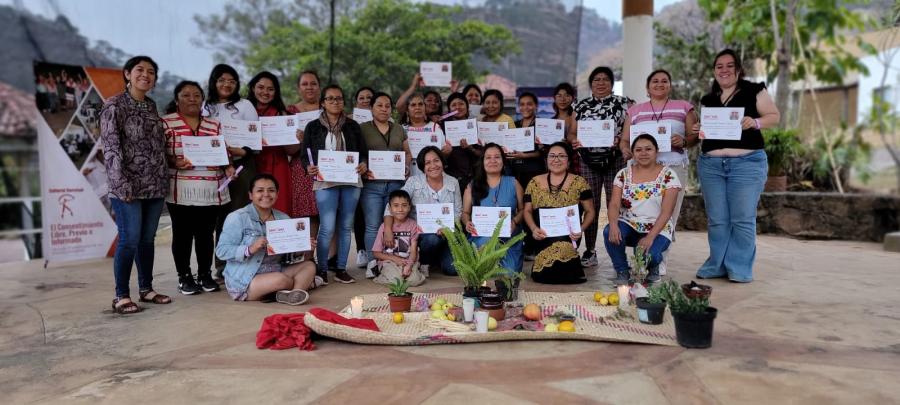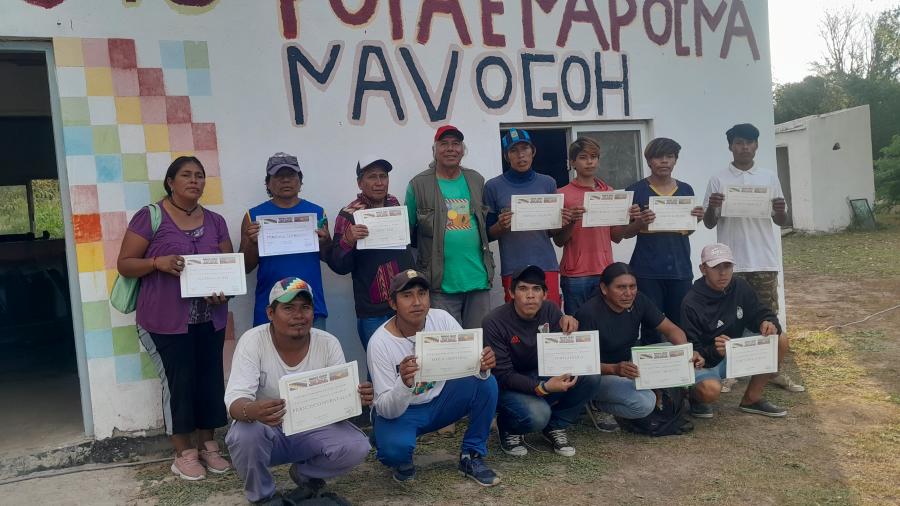For Mexicans, maize is not a crop but a deep cultural symbol intrinsic to daily life. Corn was domesticated from a grass called teocintle by the peoples of Meso-America approximately 10,000 years ago. Often referred to as humanity’s greatest agronomic achievement, maize is now grown all over the world. The yellow corn commonly found in the United States pales in comparison to the shapes, sizes, and colors of the traditional maize varieties cultivated by the indigenous peoples of Mexico. The ears of corn may range from a couple of inches to a foot long, in colors that include white, red, yellow, blue, and black. Some varieties even have an assortment of colors on one ear.
Corn is inextricably tied to the quotidian lives of the peasants and indigenous peoples of Mexico. As the basic grain, it shapes daily meals, and it’s growing cycle influences the timing of festivals. The image and shape of maize is a ubiquitous component of architecture and crafts. Spiritually, physically, and economically, corn sustains indigenous peoples. In the words of one Indian woman, “Corn is so important because it allows us to live at peace. It’s our form of food security.” Corn is linked to survival: During rough economic times or in the face of natural disasters, families will produce more maize to feed themselves. A Tzotzil Maya elder recounts, “During the past five centuries, while our people have withstood suffering—enormous sufferings—our corn has allowed us to survive.”
Now the North American Free Trade Agreement threatens to change that history. NAFTA has allowed the Mexican market to be flooded with imported corn from the United States, the vast majority of which is genetically modified. Before NAFTA, more than a third of the corn produced by rural farmers was retained for consumption at home, and the rest was sold on local markets. Indigenous peoples and peasants were practicing true food sovereignty and protected themselves from natural disasters and price fluctuations. Most local maize is sold through DISCONSA, a network of rural food stores common in poor and remote regions. As multinationals entered the market, a few began to sell their corn through the DISCONSA network, a practice that artificially lowered prices, hurt local farmers’ income, and disrupted the usual pattern of retaining enough corn for contingencies. More importantly, some of the corn flowing into the network consisted of genetically modified organisms. Estimates of contamination vary according to locality, from 3 percent to 60 percent. Within the DISCONSA network, the Mexican government found 37 percent contamination.
“We have learned that agrochemical companies patented our maize,” said a Tzotzil statement published in 2002 in La Jornada. “They are putting in genes from other living beings and many chemicals to completely put an end to our natural maize, so we’ll have to buy nothing but transgenic maize. If these agrochemical companies try to do away with our maize, it will be like putting an end to part of the culture that our Mayan ancestors bequeathed to us. Our indigenous peasant grandparents gave their labor and their hearts; they cried as they asked protection from our Creator for their work to bear fruit.”
To address the threat to traditional corn, the Tzotzil people formed the Mother Seeds in Resistance project. Mother Seeds is based in an autonomous indigenous school in the Chiapas highlands. There the community is identifying seeds to be preserved and preparing them to be frozen (for preservation, the moisture content in the seeds must be below 6 percent; otherwise the water inside the seeds will freeze and then burst the cell membranes, destroying them).
Community members of all ages are involved in the identification process, and it has become a channel through which young are learning from their elders. “It’s good to talk about these things in Tzotzil,” said two teachers, “because it is our own language.” Aldo Gonzalez, an indigenous Zapotec who has been on the forefront of the campaign against genetically modified maize, says, “Native seeds are a very important part of our culture. The pyramids may have been destroyed, but a handful of maize seed is the legacy we can leave to our children and grandchildren.”
Christina Santini recently worked at the Food and Agriculture Organization of the United Nations and currently works in urban planning and development at Harvard University. She is also a professional cook.


